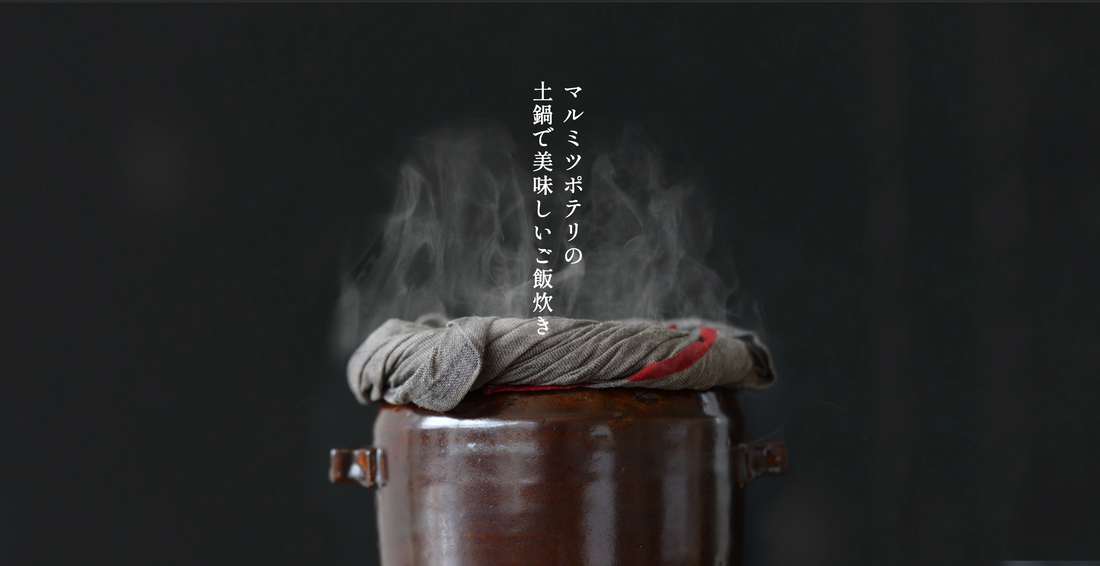When it comes to cooking rice, there are many methods and tools available. One traditional and time-tested way is using a Japanese Clay Donabe pot. This ancient cooking vessel has been used for centuries in Japan to prepare various dishes, including the staple food, rice.
What makes a Japanese Donabe pot special for cooking rice?
The porous nature of the clay material allows for even heat distribution, ensuring that the rice cooks uniformly. This results in perfectly cooked rice with a fluffy texture and a slightly nutty flavour.
Why choose a Japanese Donabe pot for cooking rice?
Using a Clay Donabe pot not only enhances the flavour and texture of the rice but also adds a touch of tradition and authenticity to your cooking experience. The natural material of the pot imparts a unique earthy aroma to the rice, elevating the overall dining experience.
Next time you want to prepare a delicious and authentic bowl of rice, consider using a traditional Japanese Donabe pot for a truly special cooking experience.
Step by step method for cooking rice in a Japanese Donabe clay pot:
Before you begin, make sure you have seasoned your donabe before use. You can find the instructions for this on the donabe product pages.

1. Measure the rice accurately.
1 go = 180ml cup, smooth with your fingers to get a level measurement. Please note this is different from a standard US 1 cup which measures 250ml. If you use a different cup please use the same cup measurement when measuring water in step 6.

2. Wash the rice quickly.
First, add water all at once, stir briefly, and quickly discard the water.

3. While stirring the rice, grind it by pressing it with your palm about 15 times.
Be careful not to use too much force during this stage to avoid cracking the rice.
↓
4. Repeat until the water is clear.
It is ok if the water is as clear as the picture on the right. You can see it clearly if you compare it with the previous photo.

5. Soak the polished rice in water.
When cooking in a pot, soaking in water is essential for making the rice fluffy to the core. This should take approximately 30 minutes during the summer months, and 60 minutes during the winter months.
(Left Photo) Before water absorption, the rice is still slightly translucent.
(Right Photo) After water absorption is complete it becomes milky white. If the rice looks like this, the water absorption is complete.

6. Add the soaked rice and water to the donabe and
mix gently with your hands to evenly distribute the rice.
For cooking we are using the 2-cup Braise Donabe pot.
Some important factors when cooking in a pot is the amount of water used and the level of heat. It has long been said that the amount of water required is 20% more than that of rice. By previously soaking in water, the rice will absorb about 20-30% of the water.
Add 2 cups of water (360ml). If you measured your rice using a standard US cup measurement, use 2 cups of these instead.

7. Wrap a cloth to cover the gap between the lid and body of the donabe pot, and place over a medium heat until the water comes to a boil.
We recommend allowing the water to boil for about 10 minutes. If you like a firmer rice or want to cook quickly, turn the heat to medium-high until it boils, then boil for 7 to 8 minutes. Please note that it may be difficult to tell when the rice has boiled depending on the amount of rice cooked or the type of earthenware pot used.

8. Once it boils, reduce the heat to low and simmer for 10 minutes.
If you like it softer, cook it on low heat for 1-2 minutes longer. If you're not sure, you can open the lid and check to see if it's boiling.

9. In order to evaporate the remaining water and
steam the rice to its core, turn the heat up to high for about 10 seconds.
Make sure there is no water left. It's okay to have a look inside to check.
This process allows you to create a scorched area, and the crackling sound will adjust the scorched area.

10. Turn off the heat and let it steam for 10 minutes.
Never remove the lid at this time.
This steaming process makes the rice fluffy and delicious.

11. Once steaming is complete, open the lid, being careful not to let any water droplets fall onto the rice.
When the food is cooked well, you can see the markings of steam passages called crab holes.

12. Insert a rice scoop vertically into the cooked rice and gently turn over to fluff.
Using a slicing motion work through the rice, gently turning it from the bottom until fluffed. Stirring helps to release any excess water vapour.
Even if you don't eat the rice right away, the earthenware pot allows moisture to escape, so it can be used as a substitute for an ohitsu (rice chest). Once it's cold, you can put it in the fridge, or if you want to warm it up you can simply put it in the microwave.

13. Serve into your favourite rice bowl.
Finally, prepare your favourite rice bowl and bring it to the table. When cooking rice in a clay pot it is important to cook it many times to find a doneness that you like.
The method of cooking changes slightly depending on the brand of rice and the time of purchase. Try changing the amount of water and heat little by little to create the rice you enjoy most!
